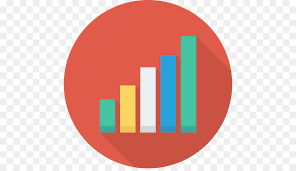PEMIDANAAN TERHADAP ANAK YANG BERKONFLIK DENGAN HUKUM DITINJAU DARI HUKUM POSITIF DI INDONESIA
DOI:
https://doi.org/10.36733/jhshs.v7i01.11501Keywords:
juvenile delinquency, policy, juvenile criminal justice systemAbstract
The development of juvenile delinquency and criminal acts which is very significant at this time is influenced by several factors including, socio-economic factors, family factors (broken homes), social factors, environmental factors and rapid technological developments. Apart from the factors listed above, the most basic things are that children easily commit juvenile delinquency, where in current conditions children are rarely given an understanding regarding the consequences that will arise. Apart from that, the influencing factors are related to mitigating policies and the role of the government and existing officials who are still hesitant in making a decision. Actions carried out by children do not necessarily come from within the child, this also arises from environmental and social factors so that crimes will easily occur among children. From the actions taken there will also arise sanctions or a criminal process which will have a deterrent effect on children. This research uses a normative juridical method, by analyzing primary legal materials, secondary legal materials and tertiary legal materials using normative and qualitative juridical analysis, then arranged systematically. The types of legal materials that will be used are in accordance with the purpose of discussing this material, namely: Primary legal materials consisting of: Law Number 11 of 2012 concerning the Juvenile Criminal Justice System.
References
BUKU
Barda Nawawi Arief, 2014, Bunga Rampai Kebijakan Hukum Pidana, Rineka Cipta, Jakarta
Lysa Anggaryni, 2016, Hukum & Hak Asasi Manusia, Kalimedia, Yogyakarta
JURNAL
Emis, Y, 2017, Diversi dan Keadilan Restoratif dalam Penyelesaian Perkara Tindak Pidana Anak di Indonesia ( Diversion and Restorative Justice in Case Settlement Of Juvenile Justice System in Indonesia), Jurnal Ilmiah Kebijakan Hukum, Volume 10 Nomor 2, Badan Penelitian dan Pengembangan Hukum dan Hak Asasi Manusia.
Gulo, N, 2018, Disparitas dalam Penjatuhan Pidana, Masalah-Masalah Hukum, Volume 47 Nomor 3, Universitas Diponogoro
Lubis, M.T.S, 2020, Sistem Pemidanaan Bagi Anak Pengedar Narkotika Dengan Hukuman Pelatihan, EduTech : Jurnal Ilmu Pendidikan dan Ilmu Sosial, Volume 6 Nomor 1, Universitas Muhammadiyah Sumatera
Purwoko, T, 2013, Analisis Faktor-Faktor Penyebab Keberadaan Anak Jalanan di Kota Balikpapan, Jurnal Sosiologi, Volume 1 Nomor 4, Universitas Lampung
Putu Eka Trisna Dewi, 2021, Penegakan Hukum terhadap Residivis Tindak Pidana Pencurian dalam Sistem Peradilan Pidana Anak, Jurnal Hukum Saraswati (JHS), Volume 3 Nomor 2, Fakultas Hukum Universitas Mahasaraswati Denpasar
Putu Gede Suriawan & Putu Eka Trisna Dewi, 2022, Pertanggungjawaban Pidana Terhadap Seseorang Yang Tidak Melaporkan Adanya Penyalahgunaan Narkotika (Studi Kasus Putusan No. 78/Pid. Sus/2019/Pn Srp), Jurnal Yusthima, Volume 2 Nomor 1, Prodi Magister Hukum Fakultas Hukum Universitas Mahasaraswati Denpasar
Rahayu, S. 2015, Diversi Sebagai Alternatif Penyelesaian Perkara Tindak Pidana yang Dilakukan Anak Dalam Perspektif Sistem Peradilan Pidana Anak, Jurnal Ilmu Hukum Jambi, Volume 6 Nomor 1, Universitas Jambi.
Salim, M.A, 2020, Implementasi Sanksi Pidana Serta Tindakan Terhadap Anak Menurut Undang-Undang Nomor 11 Tahun 2012 Tentang Sistem Peradilan Pidana Anak, Sol Justicia, Volume 3 Nomor 1, Universitas Kader Bangsa
PERATURAN PERUNDANG-UNDANGAN
Undang-Undang Negara Republik Indonesia Nomor 11 Tahun 2012 Tentang Sistem Peradilan Pidana Anak
Peraturan Pemerintah RI Nomor 65 Tahun 2015 tentang Pelaksanaan Diversi dan Penanganan Anak yang Belum Berumur 12 (Dua Belas) Tahun
Downloads
Published
How to Cite
Issue
Section
Citation Check
License
- Copyright notice
Authors who publish with this journal agree to the following terms:
- Authors retain copyright and grant the journal right of first publication with the work simultaneously licensed under aCreative Commons Attribution License that allows others to share the work with an acknowledgement of the work's authorship and initial publication in this journal.
- Authors are able to enter into separate, additional contractual arrangements for the non-exclusive distribution of the journal's published version of the work (e.g., post it to an institutional repository or publish it in a book), with an acknowledgement of its initial publication in this journal.
- Authors are permitted and encouraged to post their work online (e.g., in institutional repositories or on their website) prior to and during the submission process, as it can lead to productive exchanges, as well as earlier and greater citation of published work (See The Effect of Open Access).



